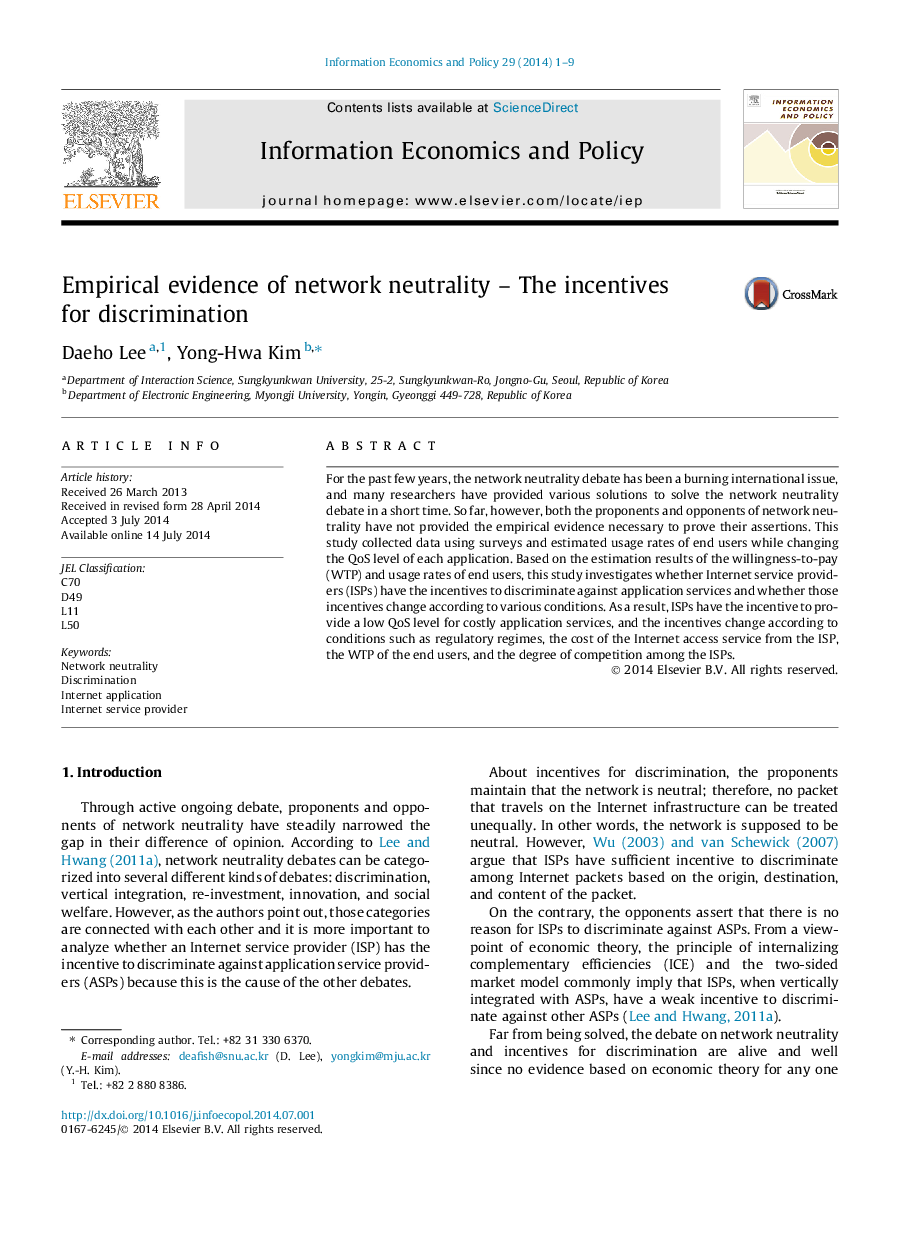| Article ID | Journal | Published Year | Pages | File Type |
|---|---|---|---|---|
| 5075737 | Information Economics and Policy | 2014 | 9 Pages |
â¢We provide the empirical evidence of network neutrality.â¢We estimate usage rates of end users while changing the QoS level.â¢We investigate the incentive to discriminate based on the estimation results.â¢ISPs have the incentive to provide a low QoS level for costly application services.
For the past few years, the network neutrality debate has been a burning international issue, and many researchers have provided various solutions to solve the network neutrality debate in a short time. So far, however, both the proponents and opponents of network neutrality have not provided the empirical evidence necessary to prove their assertions. This study collected data using surveys and estimated usage rates of end users while changing the QoS level of each application. Based on the estimation results of the willingness-to-pay (WTP) and usage rates of end users, this study investigates whether Internet service providers (ISPs) have the incentives to discriminate against application services and whether those incentives change according to various conditions. As a result, ISPs have the incentive to provide a low QoS level for costly application services, and the incentives change according to conditions such as regulatory regimes, the cost of the Internet access service from the ISP, the WTP of the end users, and the degree of competition among the ISPs.
